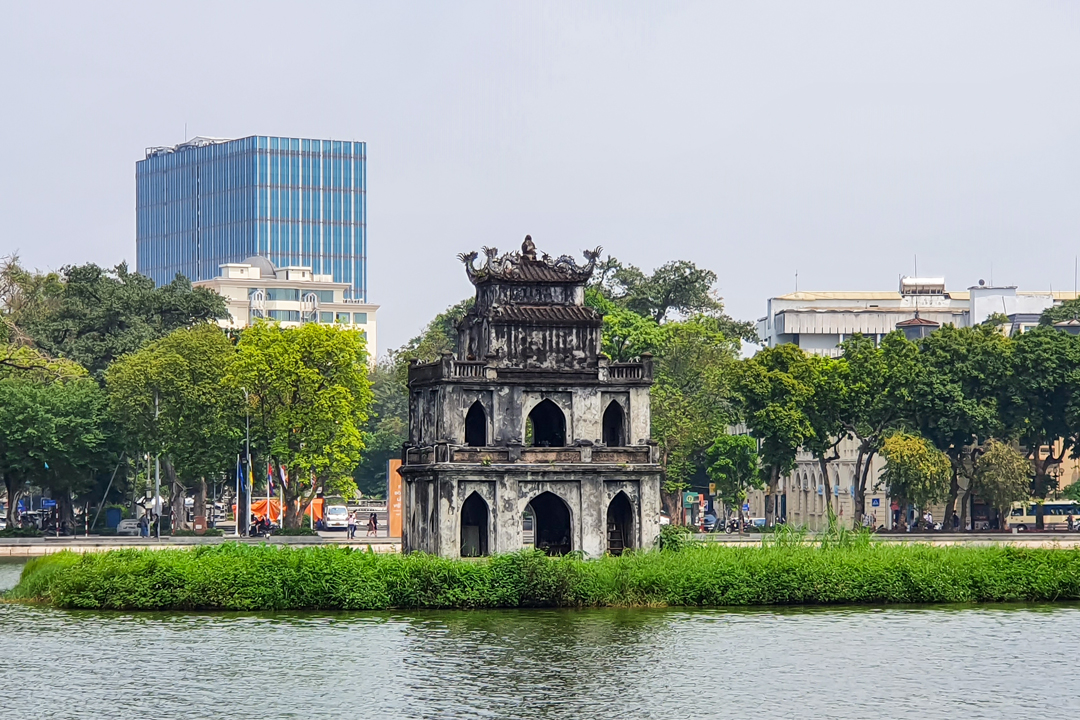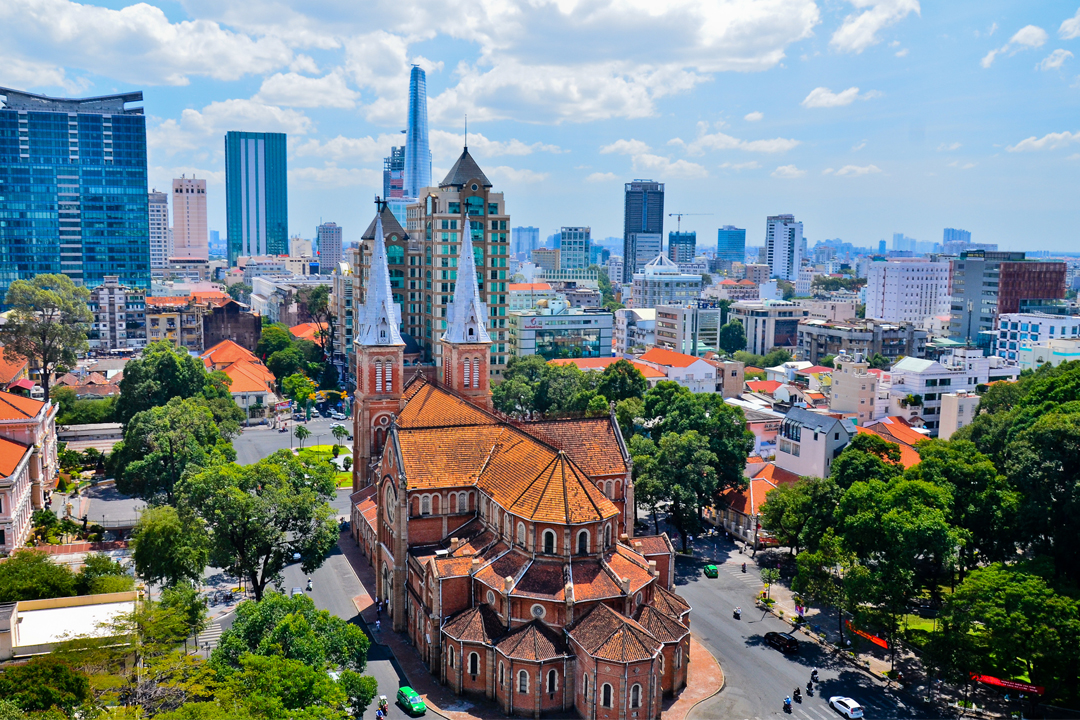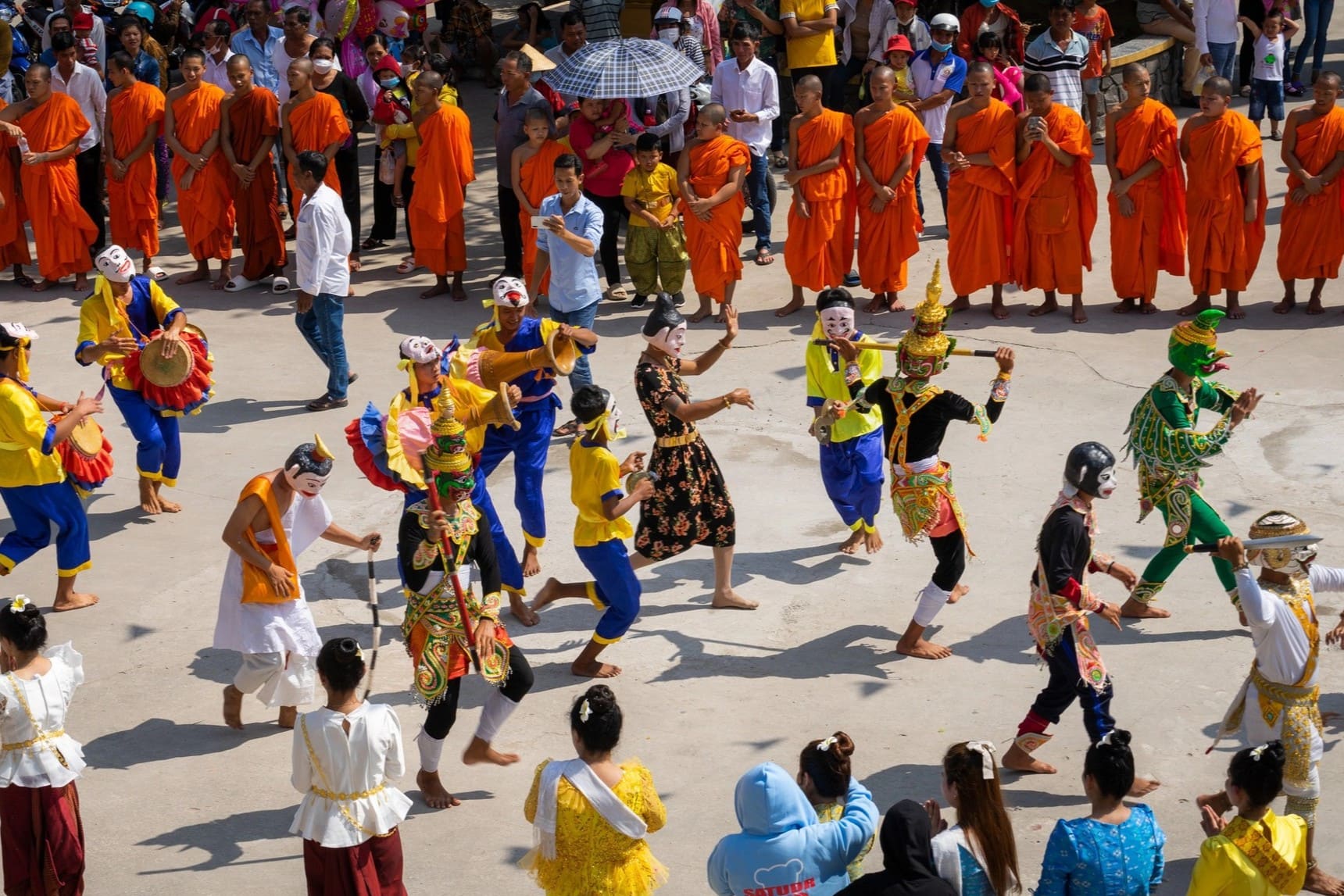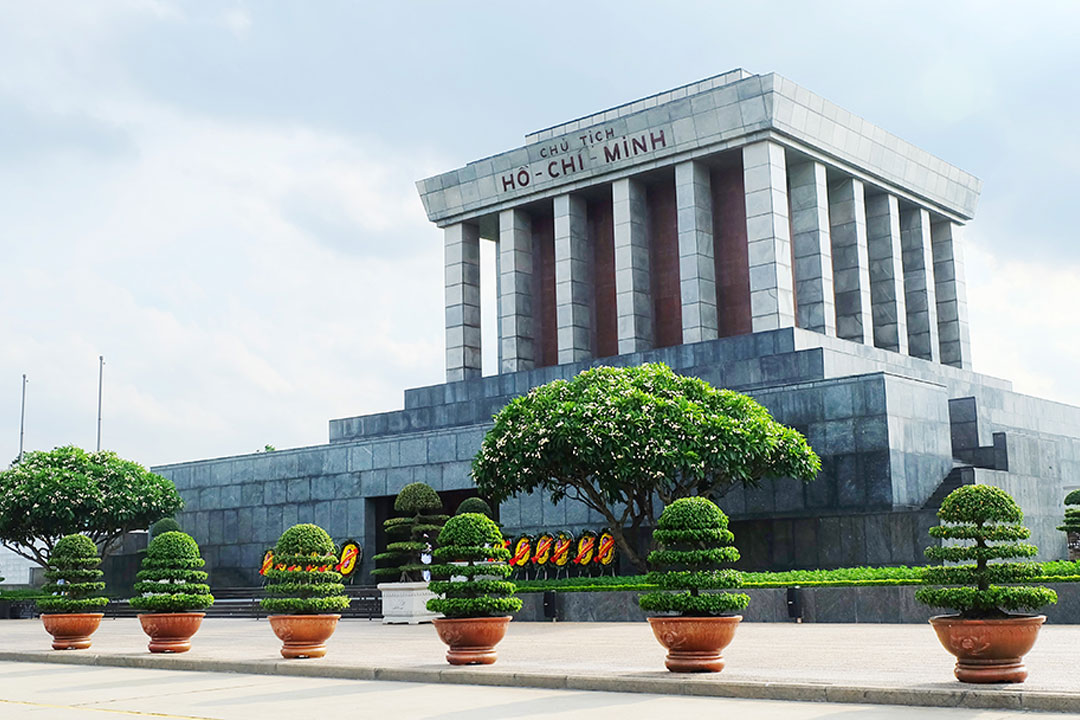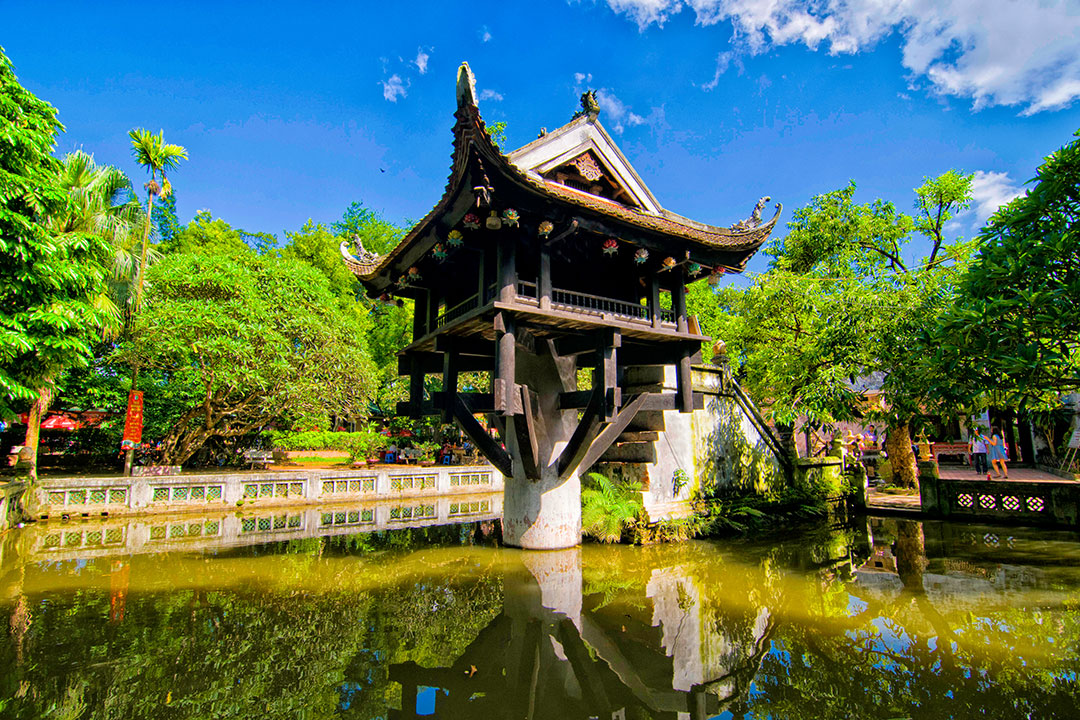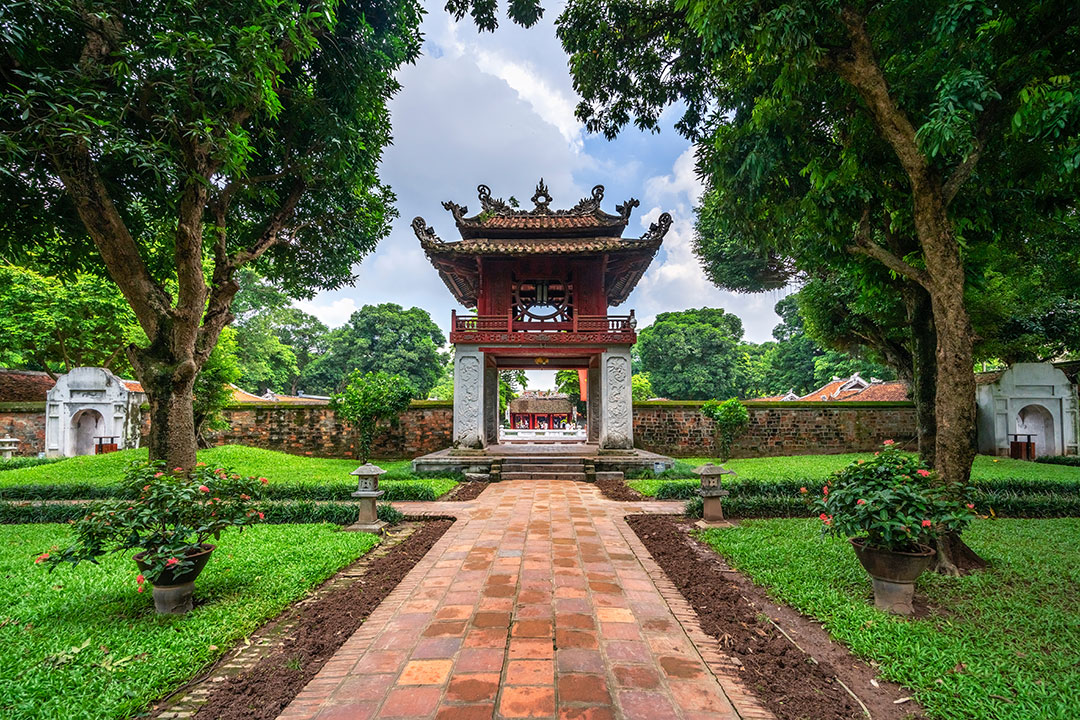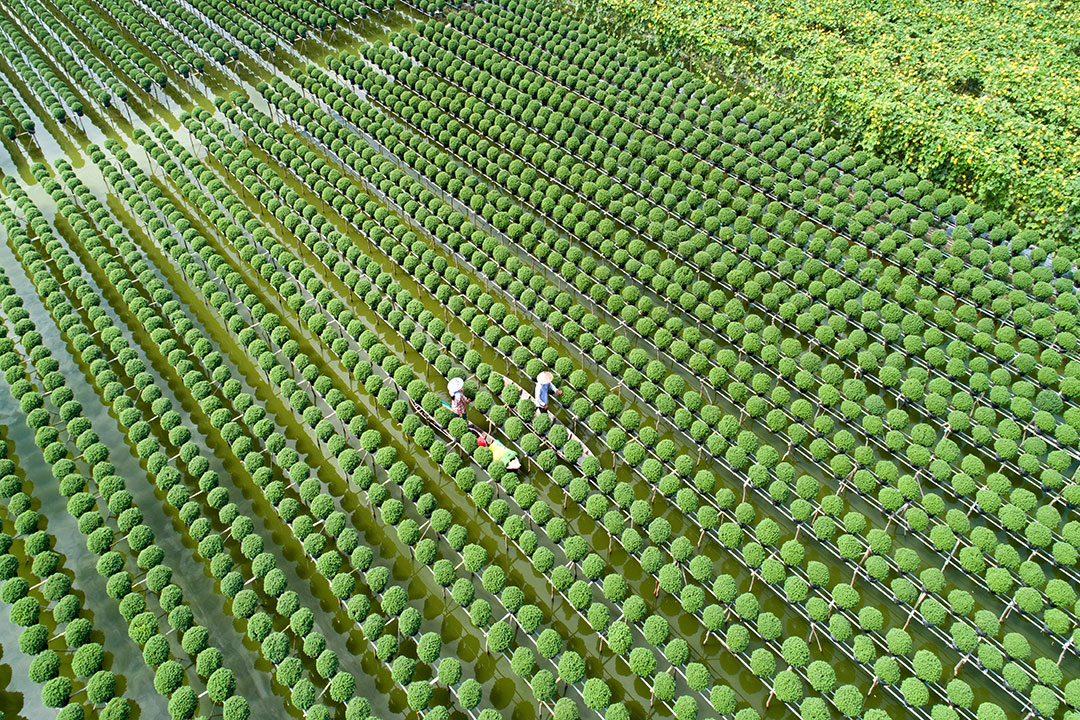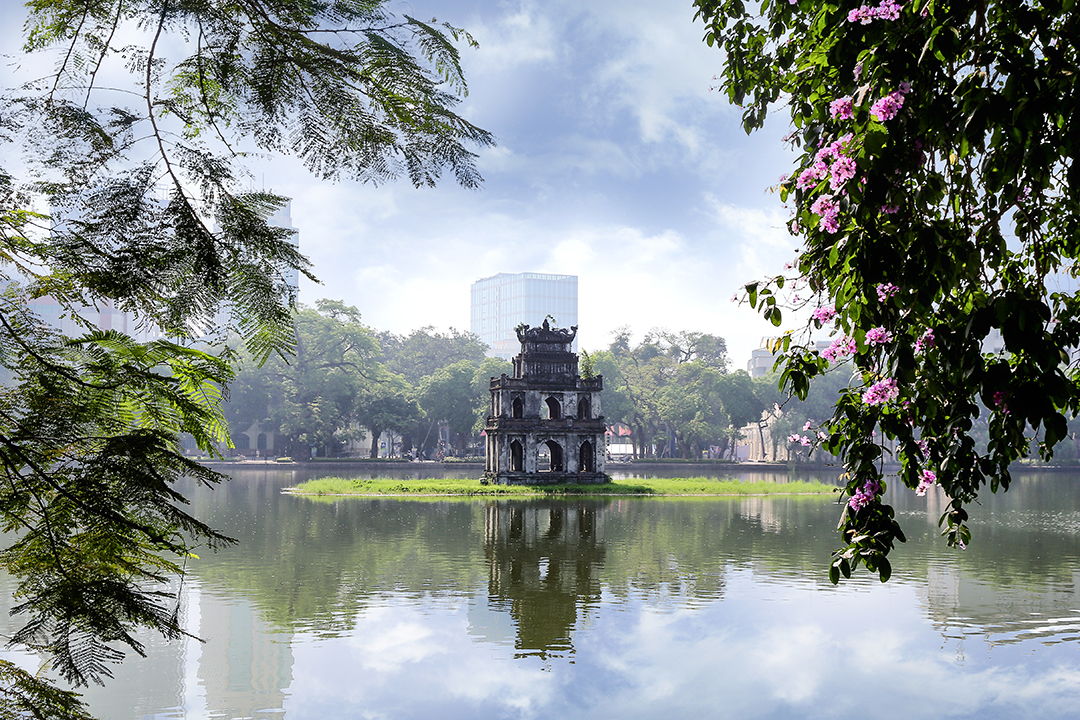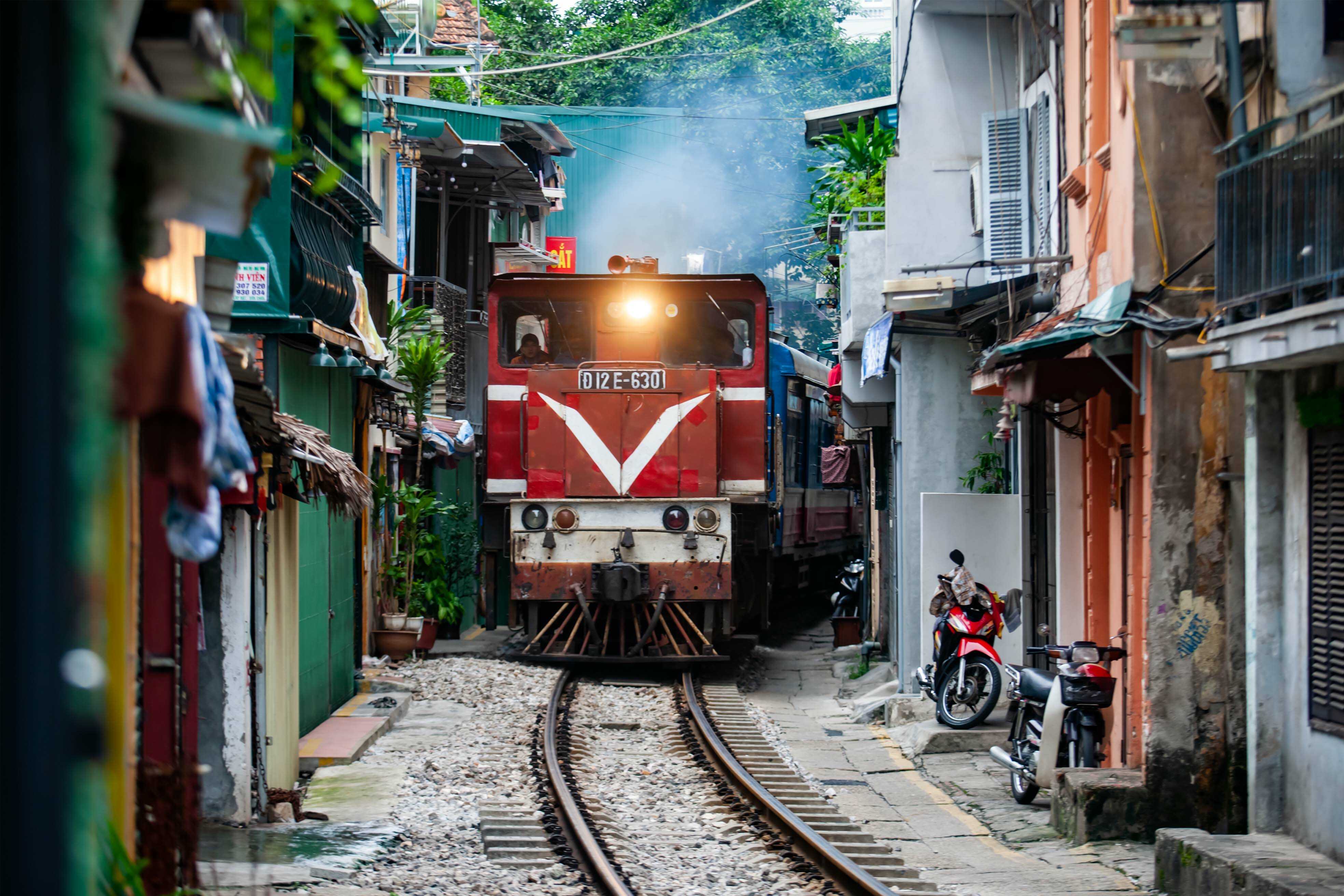Museum Of People’s Public Security: Location, Architecture, Activities & Travel Tips
The Museum of People’s Public Security stands as a powerful tribute to Vietnam’s complex and compelling history. Far more than a conventional museum, it brings to life the courage, sacrifice, and dedication of those who safeguarded national security across decades of upheaval and change. With immersive exhibits and a thoughtfully curated narrative, this site offers deep insight into the country’s path to peace and stability. In this guide of GTrip, we believe that meaningful travel includes uncovering stories that shaped the soul of a nation. Let us take you inside one of Hanoi’s most fascinating yet often overlooked museums.
Introduction to the Museum of People's Public Security in Hanoi
The Museum of People's Public Security stands as a significant cultural landmark in Hanoi, offering you a deep dive into Vietnam's security forces' history. This specialized museum showcases the evolution of Vietnam's public security apparatus through carefully curated exhibits and historical artifacts.
Where is the Museum of People's Public Security?
Location: No. 1, Tran Binh Trong Street, Cua Nam Ward (No. 1, Tran Binh Trong Street, Tran Hung Dao Ward, Hoan Kiem District, Hanoi)
The Museum of People's Public Security is in a prime position, making it easily accessible for both international tourists and local visitors exploring Vietnam's capital city. The museum offers a comprehensive chronological journey through Vietnam's security forces development. Visitors can explore detailed exhibits documenting the strategic operations and evolution of Vietnam's public security apparatus over decades of political change.
What makes this institution particularly valuable is its unique perspective on Vietnam's historical conflicts and the integral role played by security services in the nation's defense and development. The museum provides insights rarely found in other historical venues, making it a worthwhile destination for those seeking a deeper understanding of Vietnam's complex past.
Admission fee and opening hours
The Museum of People's Public Security welcomes tourists without any entrance charge. Admission is completely free for all guests, regardless of nationality or residency status.
The museum operates on the following schedule:
- Days open: Tuesday through Saturday
- Morning hours: 8:00 AM to 11:30 AM
- Afternoon hours: 1:00 PM to 4:30 PM
- Closed: Sundays, Mondays, and national holidays
This schedule accommodates most travelers' itineraries, though tourists should note the midday closure and plan accordingly. The free admission policy makes the museum an excellent option for budget-conscious travelers looking to enhance their cultural understanding of Vietnam.
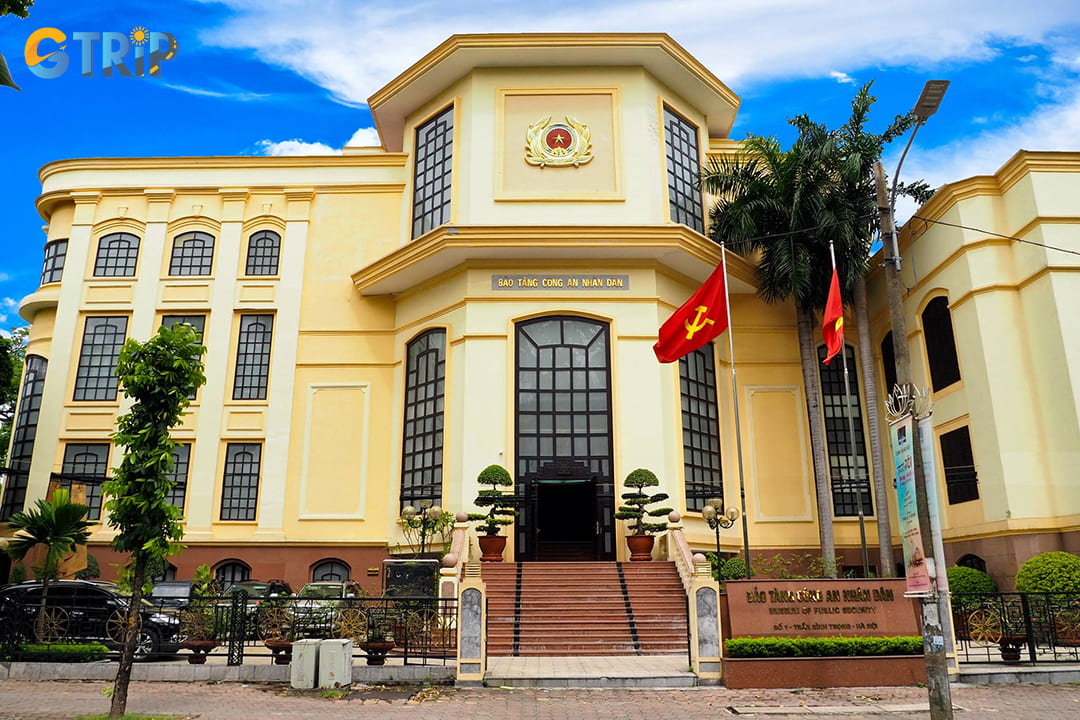
The Museum of People's Public Security stands as a significant cultural landmark in Hanoi, offering you a deep dive into Vietnam's security forces' history
Mission of the Museum of People's Public Security
The Museum of People's Public Security serves as both a historical archive and an educational institution with multiple core objectives. It provides expert consultation on traditional museum practices specific to the People's Police heritage and history throughout Vietnam. The institution plays a crucial role in state management efforts related to preserving and promoting the cultural heritage values unique to the People's Police. Museum staff offer professional guidance to other institutions on best practices for maintaining police-related historical collections and exhibitions.
Research forms a fundamental aspect of the museum's mission, with ongoing efforts to collect, inventory, preserve, and display the rich cultural heritage of Vietnam's People's Police. The museum actively engages in educational outreach and public communication activities designed to increase awareness of police contributions to national security. At its heart, the museum exists to serve officers, soldiers, and the general public by safeguarding and highlighting the historical and cultural significance of Vietnam's police sector. This educational mission helps connect citizens with their nation's security history.
Architecture of the Museum of People's Public Security
The People's Police Museum was established in 1967 and occupies a total area of 1,200 square meters spread across four floors. This space houses more than 20,000 historical documents and archives chronicling the development of Vietnam's police force, with approximately 2,000 items on public display. Tourists approaching the museum are greeted by an impressive statue of Ho Chi Minh positioned prominently at the entrance. This iconic representation sets the tone for the historical narrative presented within the museum's walls.
The architectural design of the facility supports both educational programming and contemplative experiences. The layout guides visitors through a chronological journey with exhibition spaces that balance informational displays with areas for reflection on Vietnam's security history. The building features distinct exhibition rooms dedicated to different historical periods and aspects of police work. Each space is thoughtfully designed to enhance tourist understanding through multimedia presentations, artifact displays, and informational panels.

The People's Police Museum was established in 1967 and occupies a total area of 1,200 square meters spread across four floors
What exhibitions can be discovered inside?
The Museum of People's Public Security houses a remarkable collection spanning decades of Vietnam's security history. Through carefully curated artifacts, interactive displays, and historical recreations, tourists gain insight into the forces that protected Vietnam during its most challenging periods. The museum's exhibitions are spread across multiple floors and themed spaces, each revealing different chapters of the security forces' development and contributions to national independence.
Main Exhibition Hall (Central Gallery)
The Central Gallery serves as the museum's focal point, featuring a striking sculptural ensemble with President Ho Chi Minh at its center. His statue stands as a reminder of his guidance and teachings for the People's Public Security force, with his most notable directives elegantly displayed throughout the space. You will find an impressive collection of prestigious awards bestowed on the People's Public Security by the Party and State over five decades. These honors, including medals, certificates, and commemorative items, highlight the recognition of the force's sacrifice and dedication to national security.
The exhibition meticulously presents how the security force maintained social order under the leadership of the Communist Party and President Ho Chi Minh. Interactive displays demonstrate security operations during critical historical moments, showing the evolution of policing techniques from rudimentary to sophisticated approaches. One of the most compelling sections showcases the Southern Security Force's development during resistance against American forces. This area includes:
- Personal memorabilia of security officers who served during the conflict
- Rare artifacts recovered from operations
- Detailed mock-ups of military bases and security facilities
- An extensive collection of weapons ranging from simple improvised devices to advanced military equipment

You will find an impressive collection of prestigious awards bestowed on the People's Public Security by the Party and State over five decades
Historical Period Exhibitions (2nd floor)
1945 - 1954 Room: Protection of the revolutionary government and resistance against French colonialism
The display immediately captivates you with three heroic statues of martyrs Nguyen Thi Cuc, Vo Thi Sau, and Nguyen Thi Loi. These powerful sculptures honor the sacrifice of these brave women who gave their lives for Vietnam's independence. Two large-scale models dominate the room, providing geographical context for historical events. The first depicts old Hanoi with markers highlighting sites connected to the On Nhu Hau case of 1946. The second model reconstructs the Central Police Department in Son Duong District, Tuyen Quang Province, as it existed from 1947 to 1950.
Throughout this section, you can examine original documents, weapons, and equipment used by early public security forces. Personal items belonging to officers who served during this tumultuous period offer intimate glimpses into their daily lives. Photographs and firsthand accounts document the challenges faced as the young revolutionary government established itself amid French colonial resistance.
1954 - 1975 Room: Maintaining public security and combating the U.S. war of sabotage
This exhibition area is divided into two distinct sections that cover crucial historical developments. The first focuses on the Vietnamese People's Police in building socialism in North Vietnam. A centerpiece of this display is the PY27 project, recreated as a detailed model of a sophisticated spy-catching operation. This exhibit demonstrates how public security forces achieved strategic and intellectual victory against a coalition of experienced enemy intelligence agencies despite limited resources.
The second section examines Southern security forces during the resistance against American intervention. You can see equipment used for covert communications, disguises employed by undercover agents, and evidence from successful counterintelligence operations. Personal effects of notable security officers help personalize the historical narrative. The exhibition includes photographs and documentary footage showing the challenges faced by security personnel operating in contested territories.
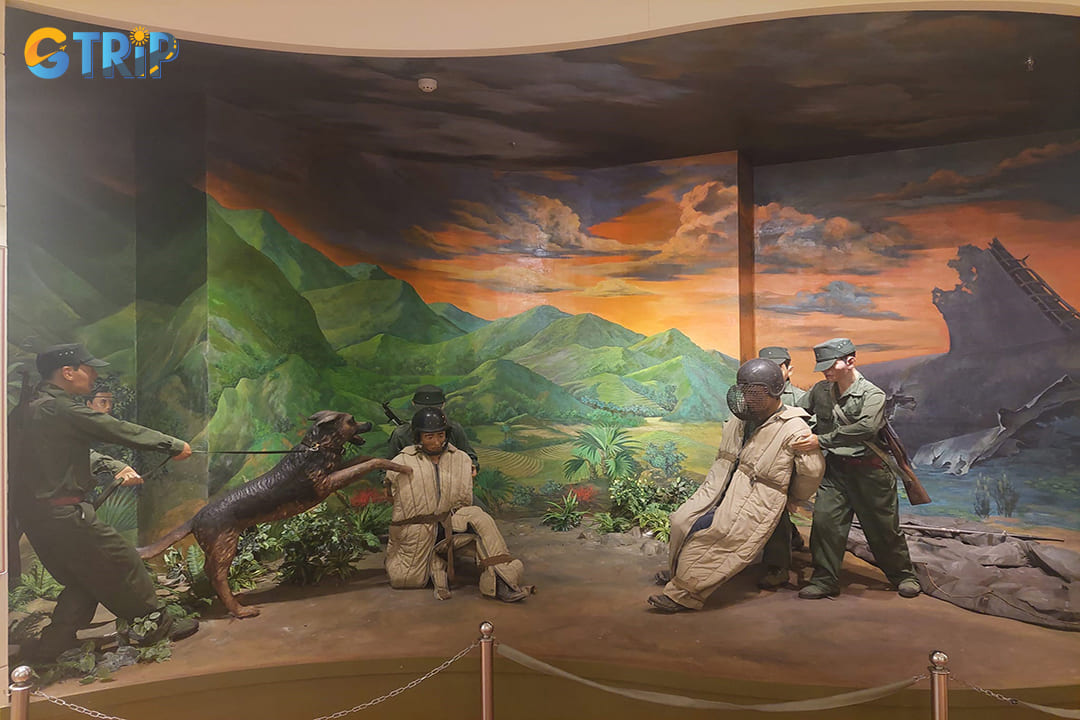
Through carefully curated artifacts, interactive displays, and historical recreations, tourists gain insight into the forces that protected Vietnam during its most challenging periods
1975 - 1986 Room: Hanoi Public Security during the pre-renovation period
After reunification, the Vietnamese People's Police faced new challenges in rebuilding the nation and establishing security throughout the country. The exhibition showcases how security forces adapted to peacetime operations while managing internal threats and external pressures. Advanced police equipment introduced during this era represents the modernization efforts of the security apparatus. Displays feature uniforms, communication devices, and investigative tools that marked the professional development of the force.
Documentation of major criminal cases from this period demonstrates investigative techniques employed by public security officers. Maps and diagrams illustrate the organizational structure of security forces as they evolved to address postwar needs. The exhibit highlights the critical role security forces played in maintaining stability during the challenging economic conditions of the early 1980s.
1986 to Present Room: Hanoi Public Security from the Renovation era to the present
Vietnam's Renovation period brought significant changes to the People's Police as the country opened to global integration. The exhibition emphasizes President Ho Chi Minh's enduring influence on the People's Police with a striking large portrait showing him among soldiers of the Public Security Forces. This powerful image symbolizes the philosophical foundation guiding modern security operations. International cooperation gains prominence in this section, documenting joint operations and training programs with foreign security agencies.
Technological advancements feature prominently, showing how digital tools transformed investigative capabilities and security operations. Modern forensic equipment, cybersecurity systems, and communication technologies illustrate the force's evolution into a sophisticated 21st-century organization. The exhibit demonstrates how public security forces balance traditional values with modern policing techniques while adapting to new challenges in the digital era.

Vietnam's Renovation period brought significant changes to the People's Police as the country opened to global integration
Thematic Exhibition Areas
The "President Ho Chi Minh and Hanoi Public Security" Room on the first floor provides a more intimate perspective on leadership and security forces. This carefully curated space documents the close relationship between Ho Chi Minh and the Hanoi Public Security through photographs, personal correspondence, and recorded speeches. You can see original directives written by Ho Chi Minh establishing core principles for security operations that continue to guide the force today. Historical context panels explain how his personal supervision shaped the character and mission of Vietnam's security apparatus during critical formative years.
The "Forces Close to the People" theme in the Main Hall emphasizes community policing and public engagement. Interactive displays demonstrate how neighborhood security units operate within communities to prevent crime and maintain order. Video testimonials from citizens and security officers highlight collaborative initiatives that strengthen public trust. This section features:
- Examples of community outreach programs conducted by public security forces
- Documentation of disaster response operations where security forces assisted civilians
- Recognition of officers who exemplified public service beyond traditional policing duties
- Educational materials showing how citizens can partner with security forces for safer communities
5 things to do at the Museum of People's Public Security
The Museum of People's Public Security offers visitors a comprehensive historical journey through Vietnam's security forces with interactive exhibits and rare artifacts. The museum provides numerous engaging activities for history enthusiasts and curious travelers alike. Here are the top experiences you shouldn't miss during your visit.
1. Admire the impressive Ho Chi Minh statue at the entrance hall
Upon entering the ground floor display area, visitors are immediately greeted by the most solemnly placed statue of Uncle Ho. This magnificent copper statue stands over 2 meters tall, commanding attention and respect in the entrance hall. The ceiling directly above the statue features striking large bronze pattern reliefs that enhance the ceremonial atmosphere of the space.
Behind Uncle Ho's statue, a detailed bronze relief depicts the formation and evolution of the People's Public Security Forces. This artistic backdrop provides historical context while complementing the statue's dignified presence. The careful positioning and artistic elements surrounding the statue create a reverential atmosphere that sets the tone for the entire museum experience. Many tourists take a moment here to reflect on Ho Chi Minh's significant role in Vietnam's history before continuing their tour through the museum's extensive collections.
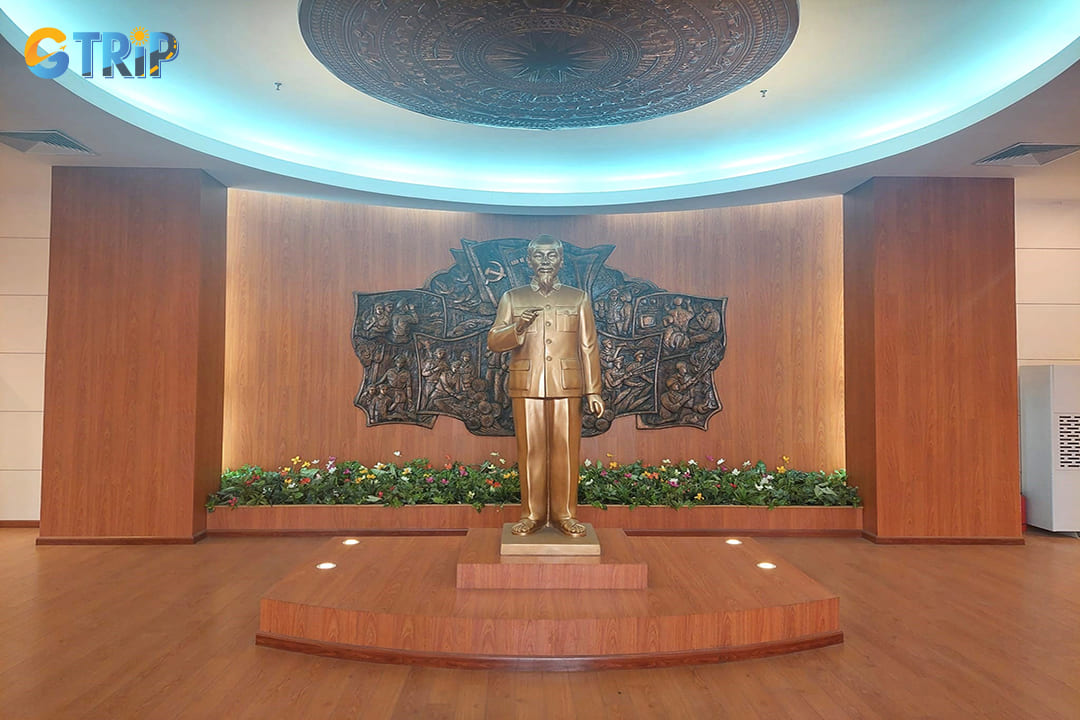
This artistic backdrop provides historical context while complementing the statue's dignified presence
2. Visiting temporary exhibitions at the People's Public Security Museum
Beyond its permanent collections, the Museum of People's Public Security regularly hosts special temporary exhibitions that explore specific themes related to Vietnam's security forces. These rotating displays offer fresh perspectives and content for returning visitors. The museum organizes these special exhibitions throughout the year, ensuring there's always something new to discover.
The exhibition, "People's Police engraved Uncle Ho's words", ran from May 16-20, 2024, showcasing the enduring influence of Ho Chi Minh's philosophy on the security forces. These temporary exhibitions often feature rare documents, photographs, and artifacts not normally on display in the permanent collection. Checking the museum's schedule before visiting allows travelers to time their visit with interesting temporary exhibits that might align with their specific historical interests or travel dates.
3. Viewing photo exhibits
The museum's recently expanded 1,200-square-meter space features modern equipment that enhances the visitor experience through engaging photo displays. Historical photographs capturing pivotal moments in Vietnamese public security history line the walls, offering glimpses into critical periods of the nation's development and struggles.
The collection includes numerous precious images and documents that served crucial roles during various conflicts. You can examine authentic propaganda materials such as:
- Communiques used to disseminate information
- Leaflets from the Anti-Oppression Salvation Group
- Official public notices from the Viet Minh Honor Guard
- Documentary images of President Ho Chi Minh meeting with voters during the 2nd session of the 1st National Assembly
These photographic exhibits provide a visual timeline of the development and achievements of Vietnam's security forces through different historical periods. The careful preservation and presentation of these images offer tourists authentic connections to Vietnam's complex history.
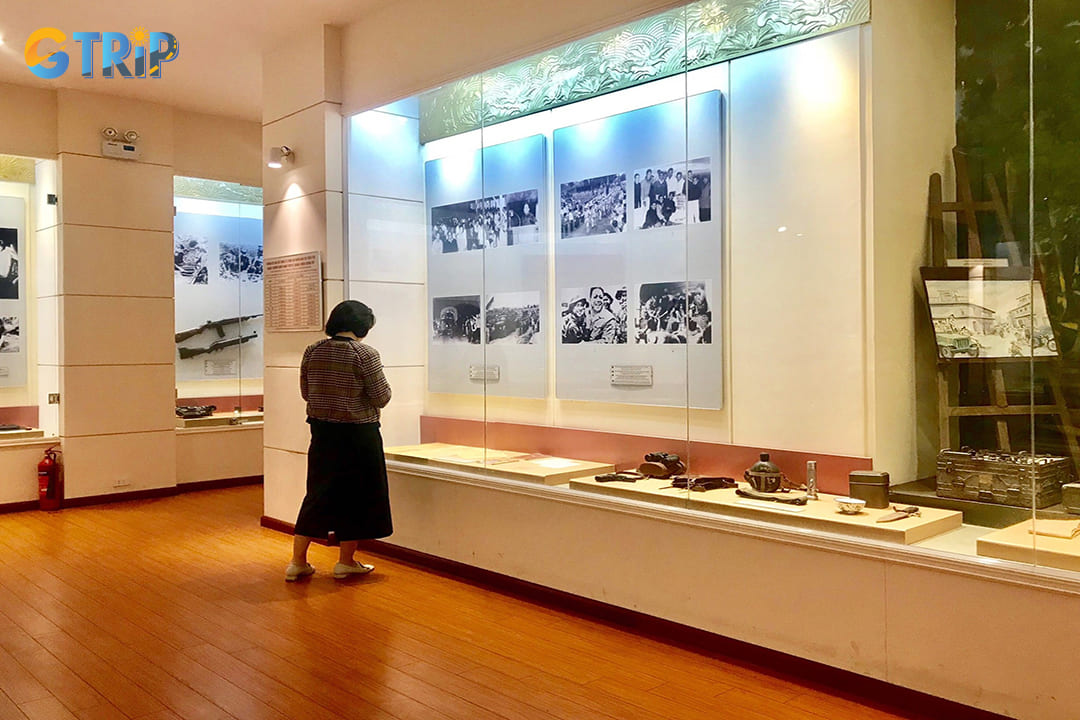
Historical photographs capturing pivotal moments in Vietnamese public security history line the walls
4. Study modelled scenes depicting significant historical events
The museum features meticulously crafted model scenes that recreate pivotal moments in Vietnam's security forces' history. One impressive diorama depicts the Saigon-Gia Dinh Security Forces occupying the National Police Headquarters of the puppet regime's seaport on April 30, 1975, a crucial moment marking the end of the Vietnam War.
Another detailed recreation illustrates the CM12 counterattack plan implemented from May 1981 to August 1988. This operation, led by police forces, targeted subjects Luu Quoc Tuy and Mai Van Hanh in a significant security campaign. These three-dimensional scenes provide you with spatial understanding of historical events that might otherwise be difficult to visualize.
The attention to detail in these models helps you better comprehend the strategic planning and execution involved in these operations. By walking around these recreations, museum-goers gain a more immersive understanding of the challenges faced by security forces during different periods of Vietnam's history.
5. Exploring the museum's artifacts
The museum houses an impressive collection of physical artifacts that tell the story of Vietnam's security forces through tangible objects. You can examine weapons displays spanning various historical periods, showcasing the evolution of equipment used by security personnel. The collection features well-preserved old communication equipment, including radios that played vital roles in covert operations.
Notable items in the collection include:
- Identification cards printed from 1950-1952 were used by Hanoi City Police officers to infiltrate enemy operations
- Grenade launchers and generators from the French Resistance War
- Personal memorabilia of Comrade Dong Van Su, a Traffic Police Department officer from Hai Duong province, who died while on duty on September 12, 2001
Each artifact connects tourists to specific moments in Vietnam's security history, providing context for understanding the challenges and sacrifices made by individuals serving in the public security forces. The careful curation of these items creates a comprehensive narrative that extends beyond written history.
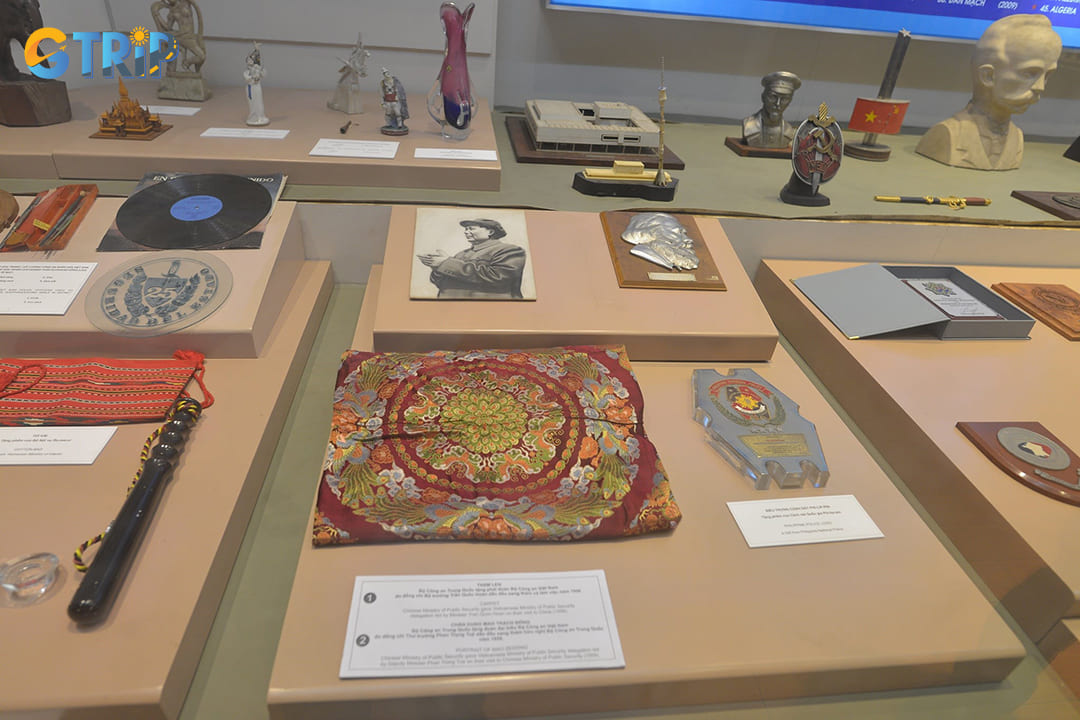
The museum houses an impressive collection of physical artifacts that tell the story of Vietnam's security forces through tangible objects
How to get to the Museum of People's Public Security?
Reaching the Museum of People's Public Security in Hanoi is relatively straightforward with several transportation options available to suit different preferences and budgets.
By bus
Hanoi's extensive bus network provides an economical way to reach the Museum of People's Public Security. Several routes conveniently stop near the museum's location, making public transportation a practical choice for budget-conscious travelers. The main bus routes serving the area include numbers 1, 3, 11, 16, 30, 34, and 40.
Bus number 1 connects the Old Quarter with the southern districts, passing close to the museum. Routes 3 and 11 link the western areas of Hanoi to the central districts, with stops within walking distance of the museum. For travelers staying in the Ba Dinh district, bus numbers 16 and 30 offer direct connections to the Hai Ba Trung area.
The bus fare in Hanoi is remarkably affordable, typically ranging from 7,000 to 9,000 VND (approximately $0.30 to $0.40 USD) per journey depending on the distance traveled. Buses generally operate from around 5:00 AM until 9:00 PM daily, with frequencies of 10-15 minutes during peak hours and 20-30 minutes during off-peak times.
By taxi/ride-hailing apps
For convenience and comfort, especially during Hanoi's hot summers or rainy seasons, taking a taxi or using ride-hailing applications is an excellent option. Popular ride-hailing services in Hanoi include Grab, Be, and traditional taxi companies like Mai Linh or Vinasun.
From central locations like Hoan Kiem Lake, a taxi ride to the museum will generally cost under 50,000 VND (around $2 USD). The journey typically takes between 10-15 minutes, depending on traffic conditions. During rush hours (7:30-8:30 AM and 5:00-6:30 PM), travel times may double due to Hanoi's notorious congestion.
Ride-hailing apps offer the advantage of fixed pricing before your journey begins, minimizing the risk of overcharging. Most apps have English interfaces, making them accessible for international visitors. For groups of 3-4 people, taxis often work out as cost-effective as taking the bus while offering door-to-door convenience.
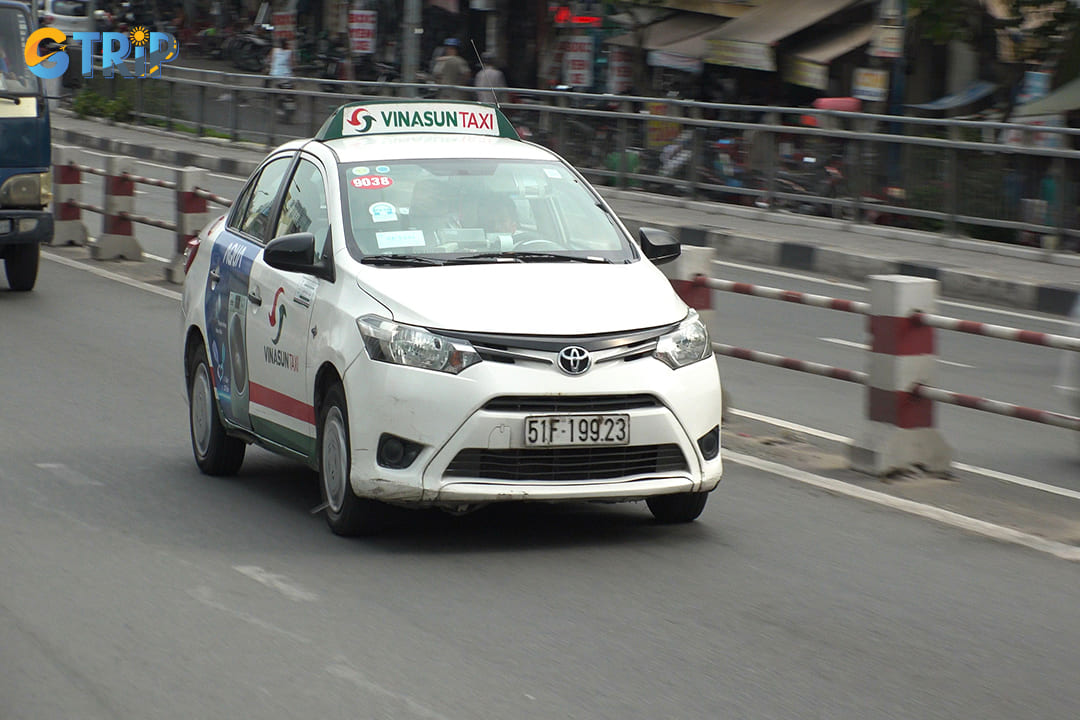
Popular ride-hailing services in Hanoi include Grab, Be, and traditional taxi companies like Mai Linh or Vinasun
By motorbike or bicycle rental
Renting a motorbike or bicycle provides flexibility and independence when exploring Hanoi, including visits to the Museum of People's Public Security. Many hotels and specialized rental shops throughout the city offer daily motorbike rentals for approximately 100,000 - 150,000 VND ($4-6 USD) per day.
Bicycles present an eco-friendly alternative, typically costing 30,000 - 50,000 VND ($1.30-2.20 USD) per day. The museum has designated parking areas for both motorcycles and bicycles, with attendants charging a small fee of 5,000-10,000 VND ($0.20-0.40 USD) for secure parking during your visit.
Navigating Hanoi's streets requires caution due to the bustling traffic, especially for those unfamiliar with local driving patterns. Using navigation apps like Google Maps helps ensure you find the most direct routes to the museum while avoiding the busiest thoroughfares during peak hours.
On foot
Walking to the Museum of People's Public Security is viable if you're staying within 1-2 kilometers of the location. The museum sits approximately 1.5 kilometers southeast of Hoan Kiem Lake, making it a pleasant 20-25 minute walk from the Old Quarter through some of Hanoi's charming neighborhoods.
The walking route from Hoan Kiem Lake takes you along Hang Bai Street, continuing to Tran Hung Dao Street, before turning onto Tran Binh Trong Street. This path offers glimpses of local life and passes several small cafes where you can stop for refreshments along the way.
Early mornings (before 9:00 AM) and evenings (after 5:00 PM) provide the most comfortable walking conditions, particularly during summer months when midday temperatures can reach 35°C (95°F) with high humidity. Carry water and wear comfortable footwear if planning to reach the museum on foot.

Walking to the Museum of People's Public Security is viable if you're staying within 1-2 kilometers of the location
Nearby attractions from the Museum of People's Public Security
After exploring the Museum of People's Public Security, tourists can easily extend their cultural journey by visiting several fascinating attractions within walking distance. The museum's central location in Hanoi's Hoan Kiem District makes it an excellent starting point for discovering other important historical sites that complement your understanding of Vietnam's complex past.
Hanoi Police Museum (400 m)
Just a short 5-minute walk from the Museum of People's Public Security stands the Hanoi Police Museum at 67 Ly Thuong Kiet Street in Hoan Kiem District. This specialized museum offers tourists a different perspective on law enforcement history in Vietnam's capital city. The museum houses an impressive collection of artifacts, documents, and photographs chronicling the development of Hanoi's police force from its early days to modern times.
You can examine authentic police equipment, uniforms, and weapons used throughout different historical periods. The museum highlights significant cases and operations that shaped public security in the capital over the decades. Interactive exhibits demonstrate investigation techniques and the evolution of forensic methods used by Vietnamese authorities. Many travelers appreciate the complementary nature of this museum when paired with the Museum of People's Public Security for a more complete understanding of Vietnam's security apparatus.

Hanoi Police Museum offers tourists a different perspective on law enforcement history in Vietnam's capital city
Hoa Lo Prison (450 m)
A mere 450 meters from the Museum of People's Public Security lies the infamous Hoa Lo Prison at 1 P. Hoa Lo in Hoan Kiem District. Originally built by French colonists in the late 19th century to house Vietnamese political prisoners, this site later became known to American POWs as the "Hanoi Hilton" during the Vietnam War. Today, only a portion of the original complex remains as a museum, with the rest having been redeveloped into the Hanoi Towers.
The preserved section features harrowing exhibits of the brutal conditions Vietnamese revolutionaries endured under French colonial rule. You can view original cells, solitary confinement quarters, and the guillotine once used for executions. Display cases hold prisoners' personal items, secret communications, and improvised tools used in escape attempts. The museum provides a stark contrast between the French and American periods of incarceration through photographs, artifacts, and detailed historical narratives.

The preserved section features harrowing exhibits of the brutal conditions Vietnamese revolutionaries endured under French colonial rule
Book Street in Hanoi (500 m)
A refreshing cultural change awaits just 500 meters from the Museum of People's Public Security at Hanoi's charming Book Street, located on 19/12 Street in the Hoan Kiem District. This pedestrian-friendly street has been transformed into a literary haven where bookshops, cafes, and cultural spaces create a relaxed atmosphere perfect for browsing or taking a break from museum visits.
The 200-meter-long street features beautifully designed bookstores showcasing Vietnamese literature, international titles, and specialty publications covering history, art, and travel. You can explore unique reading spaces with traditional and contemporary Vietnamese architectural elements integrated throughout the design. Several charming cafes along the street offer perfect spots to enjoy Vietnamese coffee while leafing through newly purchased books or planning your next destination.
Highlights and activities:
- Browse books in multiple languages (increasing selection of English titles)
- Attend occasional author readings and book launches
- Enjoy street performers and small art exhibitions
- Visit during evening hours for atmospheric lighting
- Take advantage of ample seating areas for reading and people-watching
- Average visit time: 30 minutes to 1 hour, depending on interest
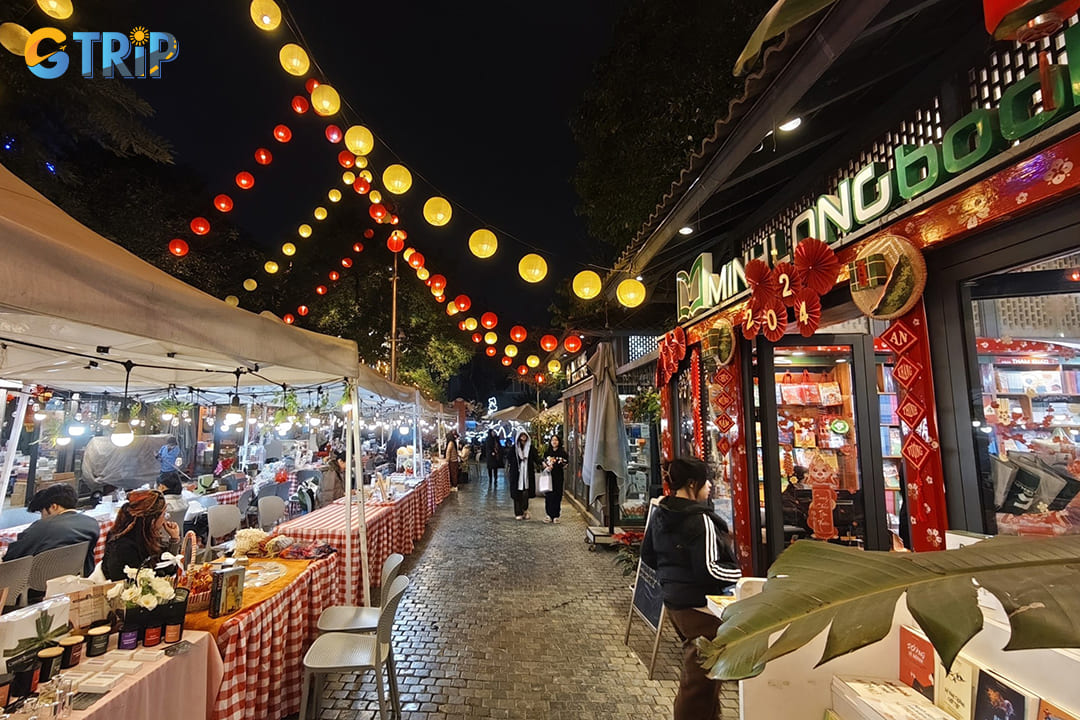
The 200-meter-long street features beautifully designed bookstores showcasing Vietnamese literature, international titles, and specialty publications
Exploring the Museum of People's Public Security offers a unique glimpse into Vietnam's historical journey with its public security forces. This experience deepens your understanding of a vital, yet often overlooked, aspect of the nation's past and present. From riveting exhibits to compelling stories, you are left with an enriched perspective on resilience and dedication in shaping national security. If you're curious about other remarkable attractions or need insights for planning further explorations, consider booking Hanoi tours of GTrip - Vietnam Travel Agency.

